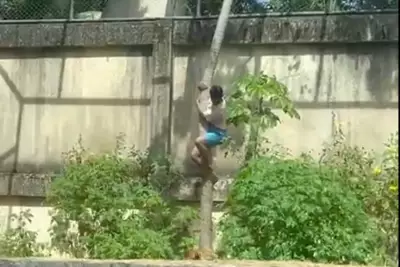
Hawaii's world-famous palm trees are facing an unprecedented threat that could change the islands' iconic landscape forever. A relentless invasion of coconut rhinoceros beetles has triggered an environmental emergency, with thousands of palms already destroyed and experts warning the situation is rapidly worsening.
The Silent Destroyers
These invasive beetles, measuring up to five centimetres long, are attacking palms in a particularly devastating manner. Rather than feeding on leaves, they burrow into the crowns of trees, devouring the growing tissue from the inside out. The damage often goes unnoticed until it's too late, with trees collapsing unexpectedly once their structural integrity is compromised.
Ground Zero: Oahu's Battlefront
The island of Oahu has become the epicentre of this ecological crisis. Local authorities report that thousands of palms have already been lost, with the beetle population spreading at an alarming rate. The situation has become so severe that officials are considering controversial measures including mass tree removal in heavily infested areas.
Tourism Industry Concerns
The potential impact on Hawaii's vital tourism industry cannot be overstated. The islands' signature palm-lined beaches and resort areas draw millions of visitors annually. Industry leaders are growing increasingly anxious as the beetle advance continues unchecked, threatening the very scenery that defines the Hawaiian experience for many travellers.
Desperate Measures
Authorities are deploying multiple strategies in their battle against the invaders:
- Enhanced monitoring systems using drone technology and satellite imagery
- Biological controls including specialised fungi and nematodes that target beetle larvae
- Public awareness campaigns urging residents to report sightings immediately
- Quarantine measures to prevent spread to neighbouring islands
Scientific Race Against Time
Researchers from the University of Hawaii are working tirelessly to understand the beetle's behaviour and develop effective countermeasures. The particular strain affecting Hawaii appears to be unusually aggressive and resistant to conventional control methods, presenting unique challenges for eradication efforts.
Environmental Domino Effect
The loss of palm trees extends beyond aesthetic concerns. These trees provide crucial habitat for native bird species and help prevent coastal erosion. Their disappearance could trigger cascading ecological consequences throughout Hawaii's delicate ecosystem.
Local conservationists describe the situation as a "wake-up call" about the dangers of invasive species in island environments. With climate change potentially creating more favourable conditions for the beetles, the race to save Hawaii's palms has never been more urgent.





